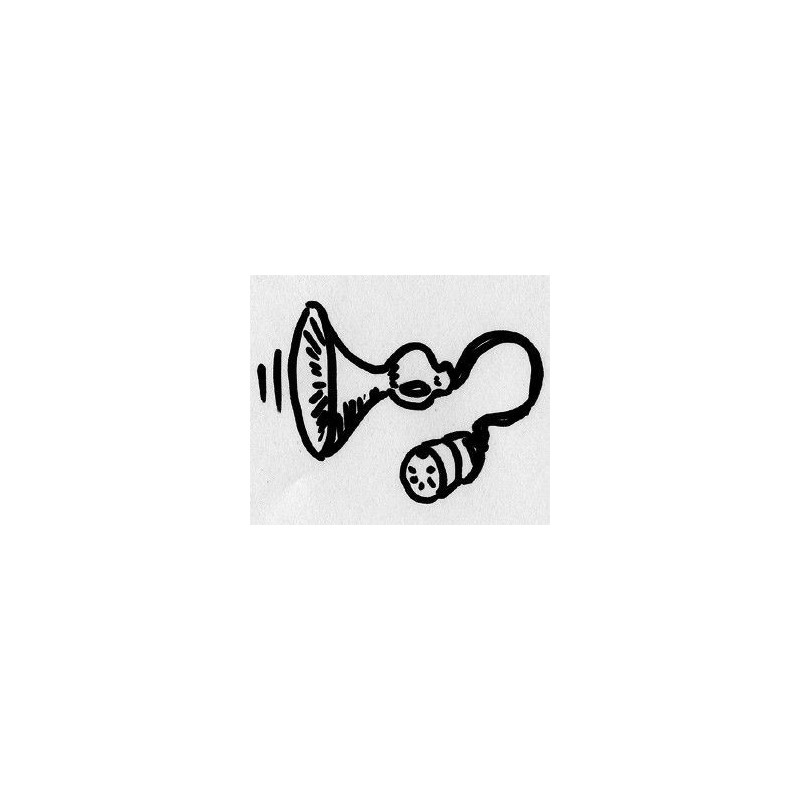



Concepts of MIDI Protocol Communication and Protocol Conversion (DMX, OSC)
MIDI Communication
Conversion to other protocols
It is a real-time digital communication protocol originally designed for electric musical instruments.The widespread adoption of this protocol by various software and hardware devices has led to the development of numerous modules capable of communicating through MIDI, taking advantage of the versatility of this standard.
The MIDI protocol allows for easy communication with up to 16 different recipients. Interface-Z's MIDI communication modules are designed to facilitate connections between multiple sources and multiple recipients, enabling seamless interaction between different devices and systems.
The Midi-Out socket of a system is connected to the Midi-In socket of the system it wants to send information to.
- For example, all sensor setups have a Midi-Out output that should be connected either to the Midi-In socket of a computer or to a serial input of a microcontroller using a small adapter circuit.
- Another example, all actuators have a Midi-In input connected to the Midi-Out output of a computer, allowing them to receive commands.
Old Atari systems are standardly equipped with Midi-in and Midi-out sockets. PC-type computers have standard joystick ports with the necessary lines for Midi communication, but a cable (joystick to Midi) is required. For Macs and other PCs, you need either an adapter box that connects to USB, a sound card with a Midi socket, or a USB console or keyboard with an additional Midi port.
Originally, devices with a Midi-In socket also have a Midi-Thru socket (or Midi-Through, repeater) allowing other devices to be cascaded, creating what is called a Midi chain. The device connected at the start of the chain can send Midi messages to all the devices in the chain. Only one transmitter is thus listened to by multiple receivers.
As the signal is repeated from device to device until the end of the chain, it gradually degrades.
The Midi Splitter helps avoid this issue by directly creating a star wiring: the emitted signal is immediately repeated to multiple outputs simultaneously. We offer a 1-to-4 splitter model that can be cascaded.
On the other hand, the inverse operation (multiple transmitters to a single receiver) is more complex. Since two transmitters can send two different messages at the same time, it is necessary to store Midi messages and be able to interrupt one message to transmit another more prioritized one. The module that allows this operation is a merger (or mergeur).
We currently offer a Midi Merger 2 to 1.
Some sensor boards are equipped with mergers to allow them to be cascaded (Synchronizable Rangefinder, merger option on 4, 8, and 12 Ana).
In the Midi standard, it is recommended not to exceed 15 meters in cable length for a Midi cable. Under good conditions, this protocol supports longer cable lengths. However, it becomes sensitive to electromagnetic interference. Furthermore, if the cables are thin or run near other types of electrical wires, problems can arise in the messages.
A Midi booster allows Midi messages to be sent over a much greater distance than a standard transmission. It amplifies the signal and prevents information loss. It allows for cable lengths of up to several hundred meters. The one in our catalog does not require a second card at the end of the cable. It is also available in various convenient connectors (XLR).
Due to the nature of the physical connection, the Midi protocol does not allow transmissions over more than approximately 15 meters without repetition. Furthermore, it can sometimes be difficult, unsightly, or impractical to run a cable between certain locations in an installation.
To address these kinds of issues, we offer several wireless Midi transmission modules, operating via radio waves, consisting of a transmitter module and a receiver module:
- On the 433 MHz frequency (single channel);
- On 2 à 4 fréquences simultanées 2.4 GHz (multi-canal).
Whatever frequency is chosen, a transmitter module can be received by an infinite number of receivers, but the reverse is not possible. To have multiple simultaneous wireless Midi transmissions, each transmitter must be paired with a receiver set to the same frequency. Each module can be paired with any sensor or actuator in a small volume, enabling wireless Midi sensors/actuators.
Adaptation module 8 analog inputs / 8 digital inputs - HF (single or multi-channel): By coupling an 8-analog input module with a HF transmitter, we get a more easily placed HF module, ideal for use in costumes.
The Miniwi, this card allows sending OSC via Wifi. The advantage is to communicate wirelessly between the card and a computer via a Wifi access point.
The DMX protocol is frequently used in control rooms to manage stage lights: traditional spotlights, LED lights, motorized projectors, etc. This equipment often has a direct DMX input, but it is also possible to control other actuators through DMX dimmers, which provide access to various lights (220 V or 340 V) and motors (fans, etc.). Our Midi to DMX card makes it simple to access this equipment from a computer and software typically used for music or real-time data management.
It is thus possible to control DMX dimmers or projectors from Max MSP, Isadora, EyesWeb, PD, Usine, or any other software capable of sending Midi output instructions (Ableton Live, Fruity Loops, etc.) using this translation card. No driver is required.
OSC = Open Sound Control, a network protocol using UDP
The OSC protocol is used for communication between computers and sharing data. It allows using the network socket to send and receive data instead of a USB port. Our OSC <-> Midi module creates a bridge between the two protocols: it converts incoming Midi messages to OSC messages and translates outgoing OSC messages into Midi messages.
Il n'y a pas d'autres documents disponibles ici pour le moment.
You might also like